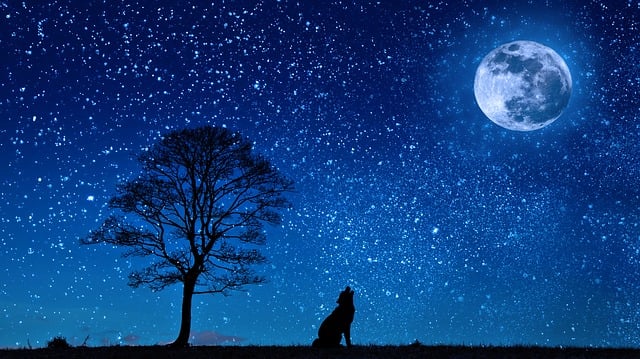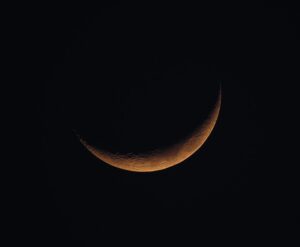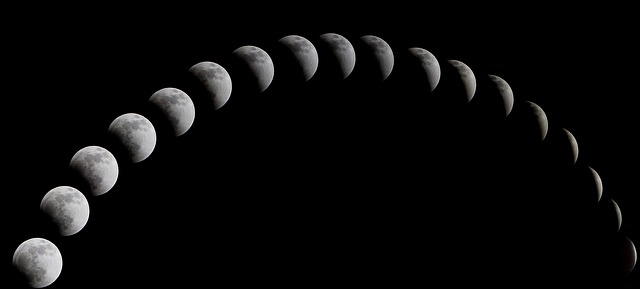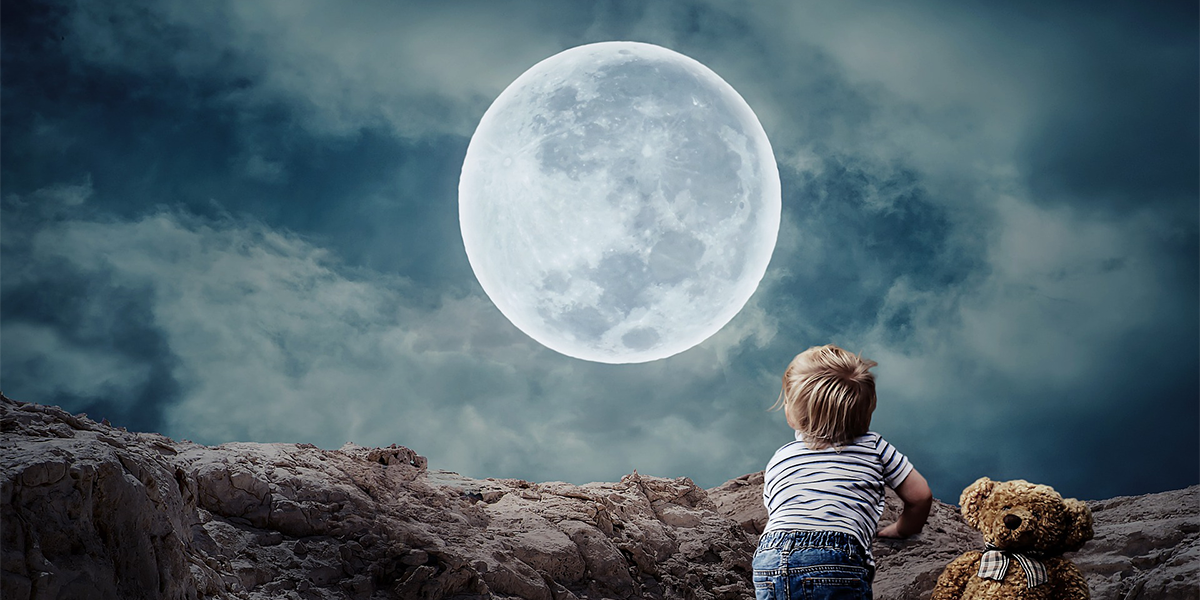
Understanding the Moon
For as long as people can remember, the moon has always been fascinating to everyone, regardless of their beliefs or background. It has inspired many myths, stories, and spiritual beliefs in cultures all around the world. If someone is looking to deepen their spiritual journey, learning about the spiritual meaning of the different moon phases can be a crucial part of it. In this journey, we will explore the spiritual significance of each moon phase and how they can guide us to our own growth and development.
The lunar cycle is made up of the 29 ½ days in which it takes our moon to circle the Earth. The moon has eight phases, each with its unique name: New Moon, Waxing Crescent, First Quarter, Waxing Gibbous, Full Moon, Waning Gibbous, Third Quarter, and Waning Crescent. Each phase represents a different stage of the moon’s cycle, which is also connected to our spiritual journey.
For example, during the new moon, we may feel a sense of new beginnings and setting intentions, while the full moon may represent a time of reflection and releasing negative energies. Understanding the connection between the moon phases and our spiritual development can help us harness the lunar energy to enhance our growth.
The moon also has a deep spiritual connection within Wicca and Pagan religions, where it is revered as a symbol of the divine feminine. In Wicca, the moon represents the Goddess and her feminine energy of creation and nurturing, while in Pagan religions, it is often associated with the Triple Goddess, representing the Maiden, Mother, and Crone.
The Full Moon: Celebrating the Divine Feminine

The full moon is often associated with the divine feminine, representing the nurturing, creative, and intuitive aspects of ourselves. The full moon represents a time of abundance, growth, and celebration. It is the perfect time to tap into our intuition, reflect on our achievements, and connect with our inner selves.
Full moon rituals and practices can help us harness the power of lunar energy to enhance our spiritual growth. For example, we may perform rituals to release negative energies, meditate, or journal about our intentions and aspirations.
In Wicca and Pagan faiths, the full moon phase represents the feminine energy of creation and nurturing and is considered a powerful time for spiritual practice and magical workings. It is associated with the Triple Goddess, representing the Mother aspect, symbolizing fertility, nurturing, and feminine power. Full moon rituals involve honoring the Goddess, setting intentions, reflecting on achievements, and releasing negative energies. Specific deities or goddesses may be associated with the full moon in these faiths.
The Waning Moon: Letting Go and Releasing What No Longer Serves You

The waning moon phase includes the waning crescent and waning gibbous phases. During the waning moon phase, the illuminated portion of the moon visible from Earth is gradually decreasing, moving towards the new moon phase. This phase represents the final stages of release and letting go and is associated with closure and completion. It is a time for introspection, healing, and tying up loose ends before the new moon phase begins.
In Wicca and Pagan faiths, the waning crescent is associated with the Crone aspect of the Triple Goddess, representing wisdom, introspection, and the passage of time. This phase is a time to reflect on the past, release what no longer serves us, and prepare for new beginnings.
The Dark Moon: Embracing the Shadow Self for Spiritual Growth
The terms “dark moon” and “new moon” are quite often used to describe the same lunar phase, however, there is a subtle difference between them. The new moon marks the beginning of the lunar cycle and is sometimes referred to as the “dark moon” because it appears dark.
On the other hand, the dark moon specifically refers to the period between the waning crescent moon and the new moon when the moon is not visible at all. This period is also called the “dead moon” or “moonless night” and lasts for about three days.
The dark moon represents a time of introspection, reflection, and embracing our shadow self. Our shadow self represents the parts of ourselves that we try to hide or suppress, such as our fears, insecurities, and negative emotions. Embracing our shadow self can be challenging, but it can also be a catalyst for spiritual growth.
Dark moon rituals and practices can help us connect with our shadow selves and release negative energies. For example, we may perform rituals to acknowledge our fears and insecurities, meditate on self-love, or journal about our inner struggles.
The New Moon: A Time for Setting Intentions and Renewal

A new moon is the phase of the moon when it looks completely dark. This happens when the moon and sun are lined up exactly. The sunlight doesn’t reach the side of the moon facing Earth during a new moon, which makes it look dark.
The new moon represents a time of renewal, new beginnings, and setting intentions. It is the perfect time to start fresh, set new goals, and make changes in our lives. The new moon represents a time of hope, possibility, and unlimited potential.
New moon rituals and practices can help us connect with our inner selves, set intentions, and create a roadmap for achieving our goals. For example, we may perform rituals to visualize our future selves, meditate on self-discovery, or create action plans for achieving our goals.
For Wiccans and Pagans, the new moon phase is a time for new beginnings, setting intentions, and starting fresh. It is a time to plant seeds, start projects, and focus on personal growth. This phase is associated with the Maiden aspect of the Triple Goddess, symbolizing new beginnings, potential, and youthful energy.
The Waxing Moon: Manifesting Your Dreams and Desires

The waxing moon phase includes the waxing crescent and waxing gibbous phases. A waxing moon refers to the phase of the moon when the illuminated portion of the moon visible from Earth is increasing in size from the new moon towards the full moon. During this phase, the moon appears to be “growing” in size as more and more of it becomes visible each night. The waxing moon phase follows the new moon and precedes the full moon in the lunar cycle.
The waxing moon phase is a time of growth and manifestation in the lunar cycle, and is the ideal phase for setting intentions, visualizing dreams and desires, and acting toward our goals.
In Wicca and Paganism, the waxing crescent and waxing gibbous phases are considered to have different spiritual meanings. The waxing crescent phase symbolizes a period of initiating new journeys, embarking on new ventures, and establishing purposeful goals. It is a time to focus on what we want to achieve and act towards our goals. The waxing gibbous, on the other hand, represents a time of perseverance, determination, and overcoming obstacles. It is a time to stay focused on our goals and push through any challenges that may arise.
Regardless of spiritual beliefs, the waxing moon phase is a time of abundance and positivity, making it an ideal time to attract what we want into our lives. By setting intentions and acting toward our goals during this time, we can harness the energy of the waxing moon to manifest our dreams and desires.
Another perspective on The Moon

In Yoruba religion, the moon is associated with the Orisha Obatala, who is considered the creator of the universe. According to Yoruba mythology, Obatala was responsible for creating humans and imbuing them with divine energy. The eight phases of the moon are believed to represent the various aspects of Obatala’s creative energy, with each phase having its unique spiritual significance.
Similarly, in Santeria, the moon is associated with the Orisha Oshun, who is considered the goddess of love, beauty, and fertility. Oshun is often depicted as a beautiful woman who embodies the feminine aspects of creation. The phases of the moon are believed to represent distinct aspects of Oshun’s energy, with each phase holding its unique spiritual significance.
In Yoruba and Santeria, the waning crescent is associated with the Orisha Oya, who is considered the goddess of the winds and change. Oya is often depicted as a powerful and transformative figure who embodies the energy of change and transition. The waning crescent is believed to be a time when Oya’s energy is at its strongest, making it an ideal time for spiritual rituals related to transformation, endings, and releasing old patterns.
In the Yoruba faith, the dark moon is associated with the Orisha Oya, who is considered the goddess of change and transformation. Oya is often depicted as a warrior-like figure who embodies the power of transformation and change. The dark moon is believed to be a time when Oya’s energy is at its strongest, making it an ideal time for spiritual rituals related to transformation, change, and growth.
Similarly, in Santeria, the dark moon is associated with the Orisha Elegua, who is considered the trickster deity and the guardian of the crossroads. The dark moon is believed to be a time when Elegua’s energy is at its strongest, making it an ideal time for spiritual rituals related to change, transformation, and decision-making.
During the dark moon, Yoruba and Santeria practitioners may perform rituals such as offering sacrifices, meditating on change and transformation, or taking spiritual baths to cleanse their energy and connect with the power of the dark moon.
In both Yoruba religion and Santeria, the new moon is associated with the Orisha Orula, who is considered the god of divination and wisdom. Orula is often depicted as a wise and knowledgeable figure who embodies the energy of setting intentions and renewal, making the new moon an ideal time for spiritual rituals related to setting intentions, renewal, and spiritual growth when his energy is believed to be at its strongest.
During the new moon, Yoruba and Santeria practitioners may perform rituals such as meditating on their intentions, making offerings to their deities, or participating in spiritual baths to cleanse their energy and renew their spiritual connection.
In Yoruba and Santeria religions, the waxing moon is associated with the Orishas Shango and Ogun, respectively. Shango embodies the energy of manifestation and abundance, while Ogun represents success and entrepreneurship. During the waxing moon phase, practitioners may perform candle rituals, make offerings, or take a spiritual bath to manifest their desires and cleanse their energy.


